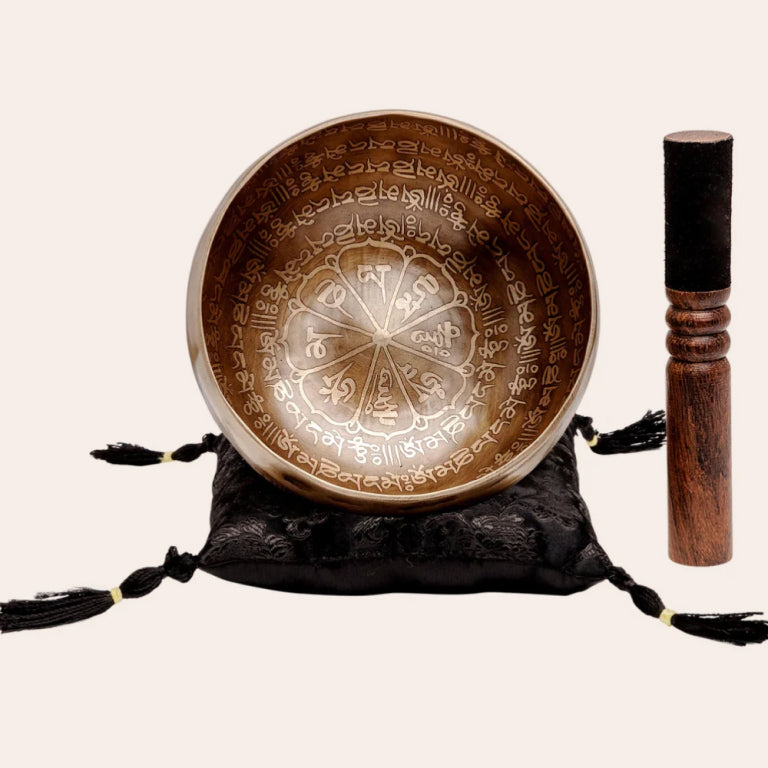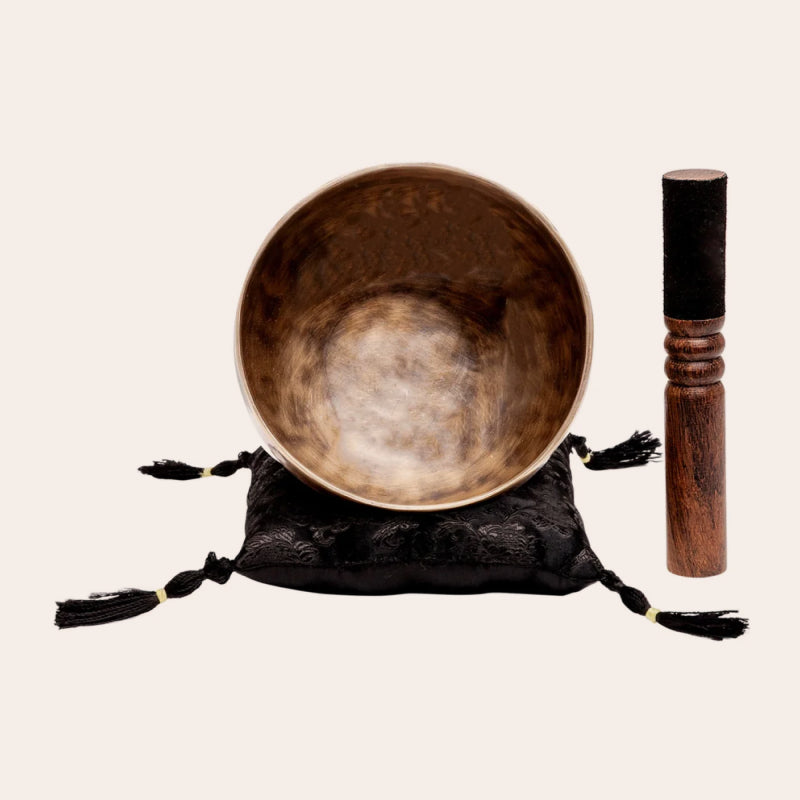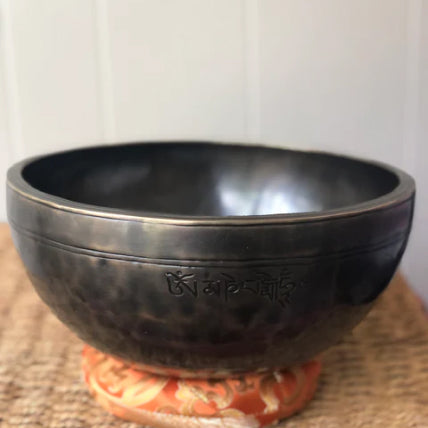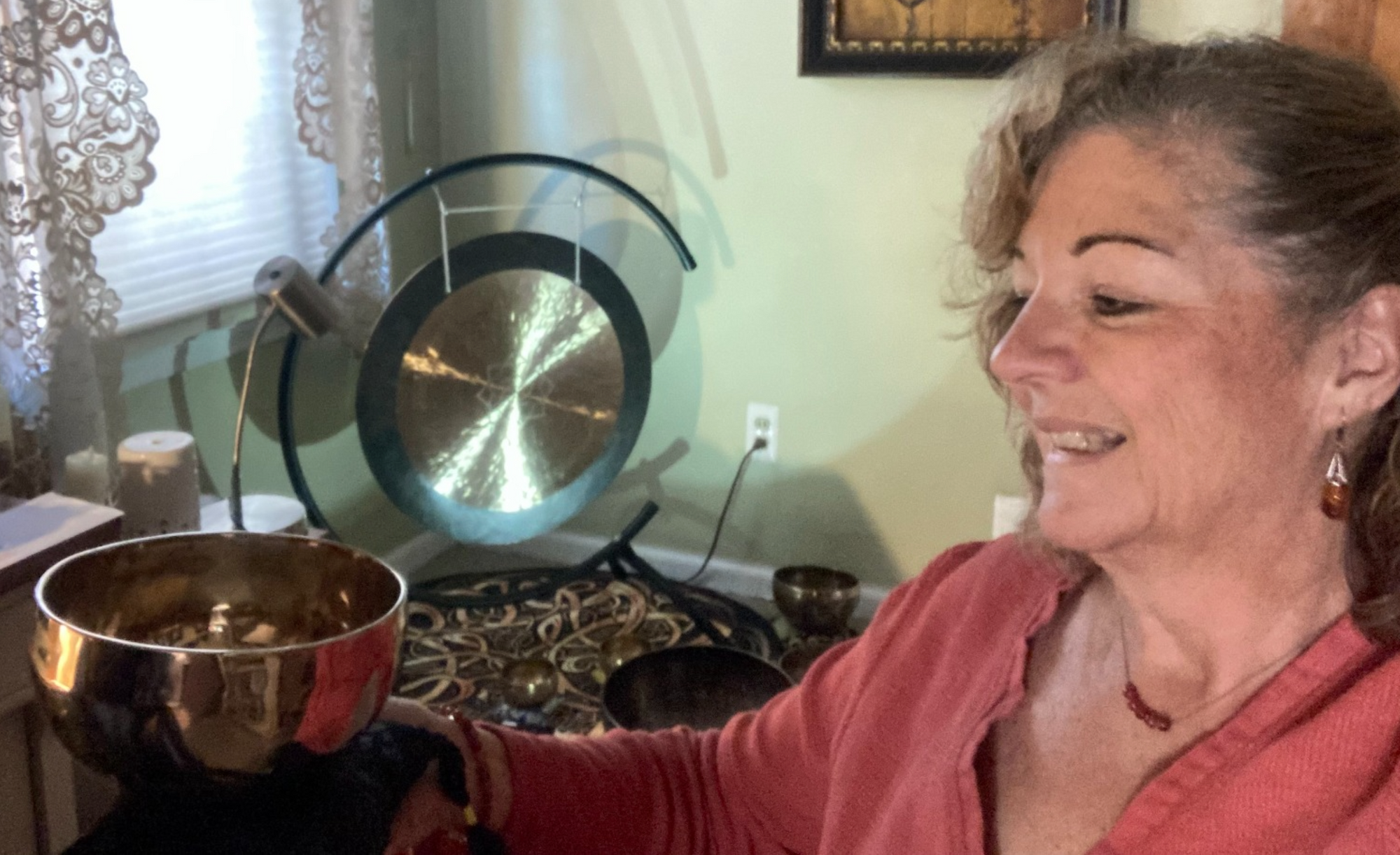Introduction – The Most Misunderstood Instrument in the World
Chances are you've heard gongs regularly throughout your life, but have you consciously recognized what you were hearing?
I'm going to make a bold claim; the gongs you've heard have been played unskillfully, without technique, understanding or nuance. The output you've likely experienced was pure volume without the subtlety of a practiced player.
As a result, you've never given the gong much thought, even thought it's one of the most spectacular and wide ranging musical instruments.
The gong is among the oldest continuously used instruments in human history.
A single strike on a gong can contain dozens of interacting frequencies. The surface of the gong responds differently depending on where and how it’s touched (speed of attach, material and mass of your playing implements matter).
Its tonal energy expands and builds on itself as you play, and dampening and muffling can be as much a part of the experience as building volume.
Ben Irons has shared that it's not exactly "playing," a gong that skilled players experience, but more having a conversation (indicating responsiveness to your instrument's behavior).
The gong is one of the most abused instruments in contemporary music and wellness culture because it’s misunderstood. It's seemingly simple and is often treated as such.
This article is for you, if you'd like to more deeply understand the nuanced power that is contained inside a gong, and how it's skillfully unleashed.
We’ll begin with what a gong actually is: its materials, categories, and acoustic profile.
We’ll explain how it’s made, and then walk through how it behaves under different playing conditions.
And finally, we’ll introduce you to Gong School, a formal training in gong musicianship for committed students and serious beginners alike.
What a Gong "Actually" Is
A gong is a suspended metallic percussion instrument designed to produce indefinite (most gongs) pitch with a wide and dynamic harmonic spectrum.
Gongs are typically constructed from a bronze or silver-nickel alloy (which doesn't actually contain silver), mounted vertically on a frame, and activated using one or more mallets.
But “gong” does not refer to one instrument, rather gong refers to a category.
A category that contains several distinct subtypes, each with specific structural, acoustic, and musical properties.
In serious musical and therapeutic use, the following are the primary types:
Chau Gong (Tam-Tam)
Alloy: Cast bronze (copper + tin)
Shape: Flat or slightly concave with a turned-back rim; lathed near the edge
Sound: Broad-spectrum, indefinite pitch with complex low-end energy and long sustain
Use: Orchestral music, concert percussion, serious sound facilitation
Notes: This is the instrument most people mean when they refer to a “traditional” gong
Example: 
Wind Gong
Alloy: Typically bronze, sometimes brass
Shape: Fully lathed on both sides, thinner and more responsive than a chau
Sound: Fast shimmer, bright overtone-rich response, shorter decay
Use: Accent and high-frequency work, often used in therapeutic settings
Notes: Requires careful touch to avoid overdriving (a wind gong is essentially a flat gong)
Silver-Nickel Gong (European Symphonic Style)
Alloy: Nickel silver (copper + nickel + zinc), formed from prefabricated sheet metal
Shape: Often similar in diameter to chau-style gongs, but thinner and lathed differently; visually smoother with uniform hammer patterns
Sound: Brighter and quicker to respond than cast bronze. Slightly reduced low-frequency mass. Emphasizes shimmer, clarity, and harmonic brilliance
Use: Symphonic performance, modern sound healing, European contemporary sound work
Notes: These are not “flat gongs.” Their behavior, tone, and their build place them in a distinct classification. Their lighter mass and higher responsiveness make them especially effective in live environments where control and clarity are priorities.
Nipple Gong (Boss Gong)
Alloy: Cast bronze
Shape: Features a raised central boss (the “nipple”)
Sound: Tuned fundamental with minimal overtone spread; relatively short sustain
Use: Southeast Asian ritual music, Gamelan ensembles, pitch-specific applications
Notes: Not appropriate for modern therapeutic or improvisational gong work due to fixed pitch constraints
Example: 
Each of these gong types behaves differently, not only in sound but in how they respond to different mallets, techniques, and environments.
Playing zones vary across the surface, and each zone reveals different timbre and sound potential depending on touch, pressure, and stroke type.
The gong is not one large playing surface, where each part represents the same piece of the whole.
It is a distributed acoustic field. Imagine concentric rings starting in the center of the gong, radiating outwards.
As you radiate outward from center, you experience changing timbral response (the color and texture of the sound possibilities is different as you get further from the center).
What happens at the center is not what happens at the edge and what happens with a soft mallet is not what happens with a friction mallet. Many possibilities are contained in this one instrument, and a skilled player can bring them out.
Most importantly, this is not a “hit and sound” instrument.
It is responsive, that response must be understood and shaped. The player’s control, sensitivity, and technique are what determine whether the sound is musical or just a really loud noise!
Before we explore how the gong behaves acoustically, we need to look at how it is made.
How Gongs Are Made
A high-quality gong is visioned first, then crafted. A process that is remarkably similar today as it was in yesteryear. We seem to be tapping into the past when we see a gong being made today.
Most gongs used in professional or serious practice today are made from one of two metal alloys:
-
Bell bronze (roughly 80% copper, 20% tin): traditional, highly resonant, challenging to work with, produces deep, complex tone
-
Nickel silver (copper + nickel + zinc): more consistent, brighter in tone, often used in Western production lines, European gong making tradition
Bronze must be worked when hot and often undergoes multiple stages of annealing (heating and cooling) to achieve the proper density and ductility (stretching the metal into a thin shape without it breaking).
After shaping, the gong may be lathed, which is a process where its surface is scraped in rings to remove material and shape how the instrument responds.
Fully lathed gongs (wind gongs) bloom faster and have more shimmer (as a general rule of thumb). Partially lathed gongs (chau gongs) offer more control and depth.
Every one of these processes affects sound. Thickness, the radius of the edges, tension, hammer pattern, and lathing grooves all determine how vibration spreads. Two gongs made from the same alloy in the same shop, shaped on the same day, will not sound the same. A wonderful "humanness" emerges in the imperfection of gong making.
How a Gong Sounds (and Why)
Every musical instrument is defined by how it produces sound.
The gong's entire surface vibrates with complexity and not always predictability.
Most gongs do not produce a standardized note in the Western sense. They produce indefinite pitch, meaning that while there may be a perceivable fundamental frequency, it is surrounded by dozens (sometimes hundreds) of partials that shift constantly in amplitude and interaction. (a nipple gong is a definite pitch instrument and outside the scope of Gong School)
Key Acoustic Properties
-
Overtones -- Each strike activates a layered set of frequencies that interact with one another. These include the fundamental, second and third partials, and non-harmonic artifacts.
-
Attack & Sustain -- Depending on how and where a gong is struck, it may respond with a quick burst of tone (sharp attack), a slow-building wave (soft roll), or a shimmering blend of frequencies. Larger, thicker gongs offer longer sustain and slower bloom; thinner gongs respond faster but decay quicker.
-
Playing Zones: (testing your gong is a wonderful process to find your zones)
-
Center: Activates low-end frequency content. Warm, slow to respond.
-
Mid-zone: Balanced tonality with mixed overtone spread.
-
Edge: Higher frequencies, shimmer, more articulation.
-
-
Mallet Influence:
-
Soft mallets: Draw out low frequencies
-
Articulate mallets: Emphasize attack and upper harmonics.
-
Friction mallets (flumies): Create sustained harmonic blooms without impact (literally without attack).
-
Categorizing by Behavior
Let’s now clearly delineate gong categories not just by shape, but by material behavior.
Bronze Chau
-
Alloy: Bell bronze (typically 80/20 copper-tin)
-
Response: Deep, complex, powerful low-end. Strong sustain.
-
Use: Orchestral, ritual, high-end sound work.
-
Notes: Requires seasoned mallet control due to richness of overtones.
Wind Gongs
-
Alloy: Usually bronze, sometimes brass
-
Construction: Fully lathed, thinner
-
Response: Very fast shimmer, bright top end, less sustain
-
Use: Accent work, faster tonal decay, upper chakra/treble-driven use
-
Notes: Highly sensitive; touch must be extremely controlled.
Nipple (Boss) Gongs
-
Alloy: Variable; often thicker bronze
-
Shape: Central raised boss, tuned
-
Response: Focused pitch; less overtone spread
-
Use: Ensemble/ritual/melodic use (Gamelan, etc.)
-
Notes: Not ideal for techniques used in Gong School (e.g., rolls, drones, muffling)
Flat Gongs
-
Alloy: Varies
-
Response: Sharp attack, minimal sustain, used for emphasis
-
Use: Effect instruments, sharp accents, short cues
Silver-Nickel Gongs (European Style)
-
Alloy: Copper + Nickel + Zinc
-
Origin: Europe (several places)
-
Construction: Prefabricated sheet metal, mechanically formed, then hand-lathed
-
Response:
-
Faster attack than bronze
-
Brighter tone profile
-
Less low-end harmonic density
-
Slightly shorter sustain
-
-
Use: Sound baths, live facilitation, modern wellness work
-
Notes: Excellent responsiveness with articulate mallets. Less weight and inertia than cast bronze.
-
Clarification: These are not “flat gongs,” even when they appear visually smooth. Their harmonic behavior and structure set them apart. They are their own distinct class of modern tam-tam.
All of these factors, material, shape, thickness, lathing, strike location, and mallet selection -- come together to define the sound of a gong.
A well-played gong doesn't have to be loud, often it may not be outside a specific and necessary context.
A gong is responsive, and the only way to achieve responsiveness is through refined control, proper tools, and accurate technique.
Most playing of a gong amounts to striking it, and loudly!
The Nuance Of Gong Playing
The overwhelming majority of people who own a gong have never been taught how to play it, they "just hit it."
It produces volume, impressively, sometimes shockingly.
The gong is easy to misuse because it’s "acoustically generous."
It will make sound no matter what you do. There is though, a large difference between sound and control. One can learn to control, to facilitate true expression through the Gong.
A well-played gong's playing journey is shaped by a skilled player, a player in deep listening and highly responsive to what's happening in real time.
The sound is shaped by understanding how the instrument responds to pressure, placement, dynamics, and timing. Things make a big difference in the sounds created, how you approach the face, the path your mallet takes, the space and timing between strikes. How you use silence.
Some ideas of what unskilled playing might be like:
-
Repeated hard strikes with no breath or pacing
-
Overuse of volume to compensate for lack of tonal control
-
No understanding of zone-based behavior
-
Ignoring sustain and decaying tone
-
No use of muting or dampening
What Skillful Playing Looks Like:
-
Consistent mallet approach with controlled velocity
-
Awareness of the gong’s tonal curve over time
-
Variation in stroke location and intensity to create texture
-
Thoughtful use of silence and pacing
-
Use of multiple mallets for tonal range
-
Ability to build dynamic arcs without overwhelming the listener
A player’s skill is not measured by how loud the gong gets, it's measured by detail, control, nuance, listening.
This is why intuition alone is not enough to fully help the gong realize it's unique potential.
Learning the Gong
The state of gong playing education is mostly informal. You can mimic what you see online, or take a fully intuitive approach to learning to play.
A structured, musically literate path is an ideal option -- and it's not always clear where this is possible to someone outside a formal musical education track.
The idea that gong playing is only intuitive can be misleading, or at least not totally helpful.
Intuition is valuable, but it must be supported by technique if it’s to become expressive.
Breath alone doesn’t generate tonal variation. You can learn how to how the mallet. How to strike in specific zones. How to roll, drone, dampen, and transition. Your touch can be trained.
Why Formal Technique Makes a difference:
-
It accelerates your ability to express emotion through tone
-
It builds consistency, especially in live facilitation and sound healings
-
It allows for intentional contrast (rather than accidental variation)
-
It deepens your ability to listen and respond
This is part of what Gong School (click here to learn about Gong School, enrollment is open and class starts July 14) teaches. How does the metal behave? How do you behave in response? How do you regulate force, release, and resonance?
You cannot answer those questions easily with guesswork or intuiting (though I imagine it's possible). You can answer them by being taught by a great Gong Player!
That’s where Ben Irons comes in.
Inside Gong School: A 7-Week Training for Learning The Gong
Gong School was created as a single place where someone could learn the instrument properly, starting from zero skills and working up to to a "301" level of advanced playing, through an intentionally designed and structured learning experience.
Gong School is a seven-week linear progression-based training program. It is led by Ben Irons, a professional orchestral percussionist, trained vibrational sound therapist, certified meditation teacher, and hypnotherapist.
His approach is disciplined, precise, and human (and we are going to have a lot of fun)
The Core Structure:
-
Weekly modules combining video instruction, guided practices with your gong, and listening exercises.
-
One live sessions per week -- Q&A and topical presentation (sometimes two sessions, we have special guest lecturers on some Thursdays)
-
A culminating capstone project: your own 20-minute recorded gong meditation
-
Lifetime access to course content and updates
-
Supportive community: facilitated via private group
Topics Covered:
-
Gripping, posture, and physical setup
-
Stroke mechanics and mallet selection
-
Playing zone acoustics and timbral variation
-
Dynamic rolls and drones
-
Muffling, dampening, and silence integration
-
Voice use: how to speak or guide while playing
-
Constructing a sonic arc for meditation or live performance
-
Listening skills and self-evaluation
It's designed to be a fun, linearly progressing training led by a trained Gong Player and professional orchestral musician, and facilitated and hosted by The Ohm Store
The Capstone: Creative Expression Lives
At the conclusion of Gong School, each student will be invited to create and records a 20-minute gong meditation. This is called the Capstone Project.
This is the culmination of weeks of instruction, experimentation, and practice. It marks a point of completion, and a celebration and capturing of what's been learned and a jumping off point for your future as a Gong Player.
The act of recording and submitting your own session requires something that few people practice regularly as adults, creative self expression, shown to other people (but we will take care of your heart as we review your submissions)
Submission Requirements:
-
20 minutes of original gong playing
-
Inclusion of spoken voice (meditative guidance, mantra, or reading)
-
At least two timbral variations (e.g., soft mallet and articulate mallet)
-
Use of at least one roll or drone
-
Clear arc: either relaxation- or focus-oriented (your choice)
No special equipment is required! This is not a professional recording test.
Most students submit their capstone using a phone or computer microphone, and this is wonderful!
The only thing we care about is whether you’ve developed a touch, a structure, and a presence that reflect your time in the program!
Why This is So Impactful
Most adult learners live comfortably within areas they’ve already mastered or feel comfortable with, parenting, work, relationships, habits. We rarely put ourselves in a position to be beginners, to stretch into new skills. The capstone breaks that pattern.
It asks you to:
-
Try
-
Be seen
-
Let someone else hear your learning
For many, this is difficult.
They worry they aren’t good enough, or musical enough, or confident enough.
But the Capstone submission and creation is not about good or bad, It’s about completion.
Who Gong School Is For (And Who It’s Not)
Gong School was created with a very specific vision in mind of how we'd approach training, and who it would be set up for.
Gong School does not have a baseline of skills needed, you don't even need to own a gong before you start.
But it is set up for someone who is serious about learning, and wants to progress through a structured curriculum that will delight that "perpetual learners," out there who crave the skill-development process for it's own sake -- and for the sake of keeping ourselves vibrant, curious and excited (and humble).
Gong School Is For:
-
Beginners: no experience required, just willingness to learn
-
Musicians: instrumentalists looking to expand into sound work
-
Facilitators: yoga teachers, therapists, wellness professionals
-
Personal Practitioners: those who don’t intend to perform, but want mastery
-
Educated Skeptics: people who are tired of mystical vagueness and want substance
We'd love to teach you to play a gong.
How to Begin – Enrollment, Access, and Tools
Gong School enrollment opens June 25th. The course begins July 14th. The structure is designed to move week by week, but you’ll have lifetime access to all materials.
You can check out more about Gong School by clicking here.
You do not need to own a gong on Day One. We can help you get a gong, or we have ideas on "fostering" a gong...Many students borrow, rent, or foster their first instrument. Week 1 can be completed using a pillow and a mallet while learning stroke technique and posture.
You Will Need:
-
One gong between 24" and 34", preferably chau, wind, or silver-nickel
-
Nipple gongs are not recommended for this course due to acoustic limitations
-
-
A soft mallet, an articulate mallet, and a pair of rollers
-
These are available as a curated bundle through The Ohm Store in collaboration with Dragonfly Percussion
-
-
A basic recording device (your phone is sufficient)
-
A willingness to practice 10–20 minutes a day
If you are unsure about what to purchase, we can provide:
-
A video guide to gong selection
-
A link to our curated instrument collection
-
Guidance on how to foster or borrow a gong in your community
Conclusion
The gong is a wonderfully expressive, complex, and powerful musical instrument. It deserves to be played with care, with respect, and with training.
Gong School exists for one reason: to teach people how to do that properly (and to have fun learning and progressing).
If you’re ready to learn the gong, we’re ready to teach you! You can click here to learn more.













